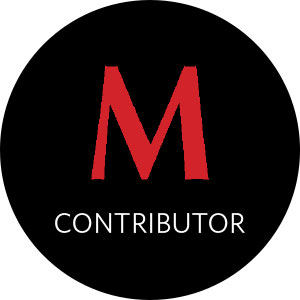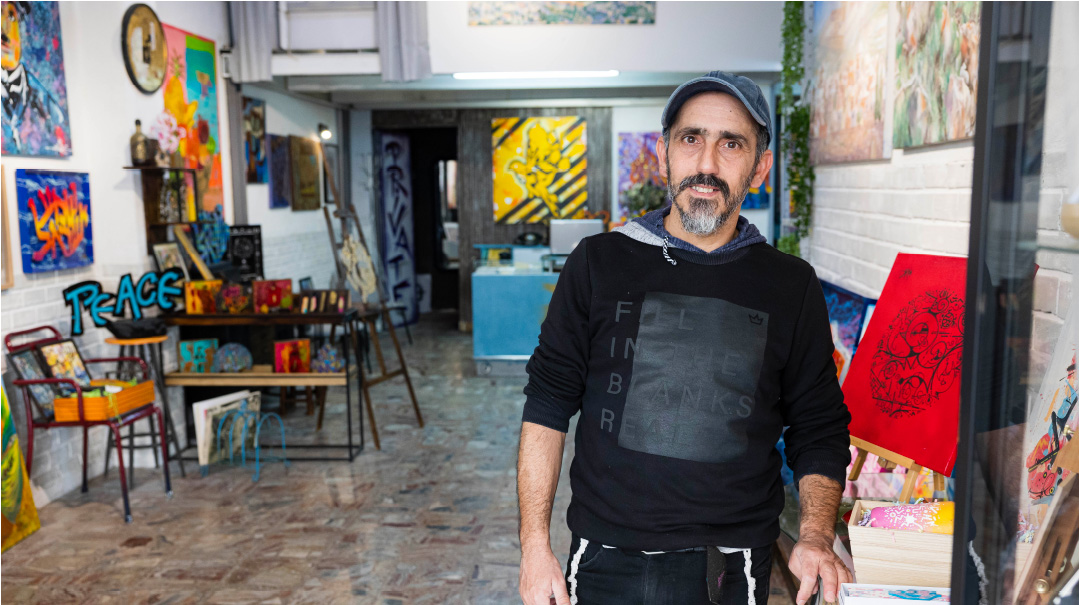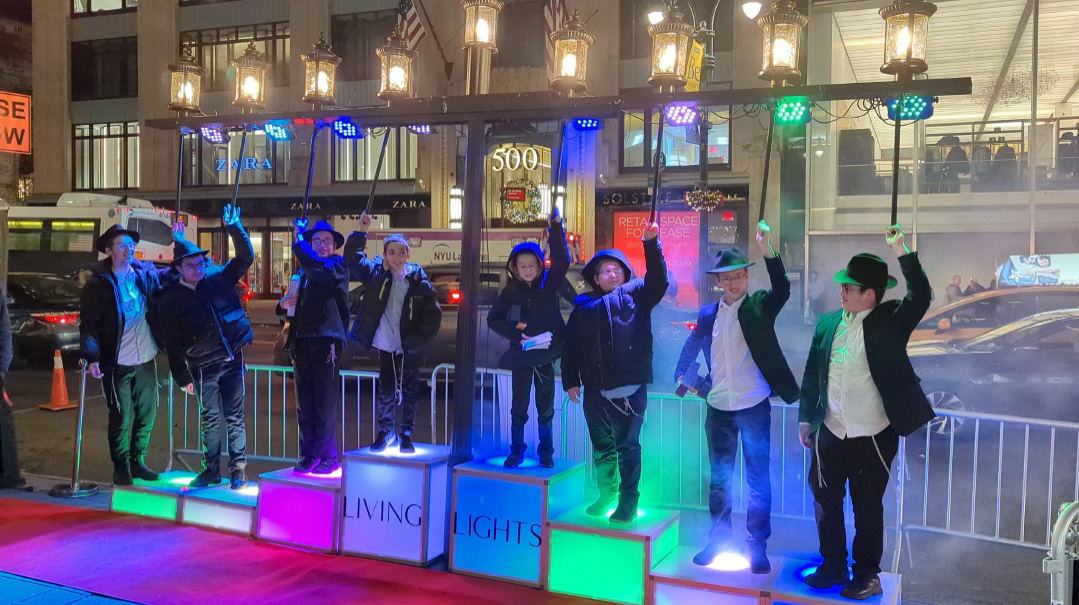Talking to the Wall

Dan Groover's street murals aren't only a fun pop of color, but windows for layers of meaning

When Dan Groover began painting graffiti on public walls around Paris, it was more about having fun and seeing what he could get away with in the middle of the night than deep expressions of an artist’s soul. But once he connected with his heritage in Jerusalem, he realized that street murals are not only a fun pop of color, but can be a window for so many layers of meaning in these spiritually intense times
Jerusalem is a city of ancient alleyways and high-rise buildings, of old-time grocery stores and modern malls, and — tucked behind makeshift stalls or proudly displayed on concrete walls — a surprising array of street paintings and intentional graffiti. Yet while some of this wall art has become iconic for regular passersby, few know that a large portion of the most well-known street paintings were created by an anonymous artist who goes under the name Dan Groover.
For years, Groover avoided fame and publicity. He lived in Jerusalem’s Mekor Baruch neighborhood on the other side of Geula, prayed every morning at a local minyan, and learned in a small kollel. Yet toward evening, he’d climb scaffolding with his brushes, cans, and paint sprayers, creating images bursting with color and messages of comfort and hope. Groover was the shadow painter who rarely spoke of his craft, and friends from the minyan or kollel who saw him at work couldn’t believe their eyes. “What are you doing on that scaffold? And what is that painting?” they’d ask in astonishment.
“Well, it’s not exactly that I hid my art, but throughout my life, even before I became Torah-observant, I saw the world as divided into the revealed and the hidden,” he says. “So yes, for a long time, I gravitated to the hidden side. I built the structures beneath the surface, didn’t talk much about what I was doing, and left others to understand my art.”
Nighttime Designer
G
roover’s professional path began as a young teenager in the 1980s, living with his parents in the rough Paris suburb known as the 93rd arrondissement, an enclave predominantly of Arab and African immigrants.
“It was a poverty-stricken area plagued by crime, unemployment, and many other problems,” Groover says. “After elementary school, I hit the streets, hanging out mostly with Muslims and Africans. We’d dance in the streets and subways at night, but unlike them, I wasn’t interested in theft or crime. My biggest thrill came from painting on walls and fences. I loved creating all types of graffiti.”
Painting graffiti was illegal in France, “So you had to paint fast, usually within one night, to avoid getting caught. Painting quality graffiti at speed without being seen was a huge challenge, and it fired me up.”
Groover says that as a boy who had never studied seriously and had no other outlet for expression, graffiti became a channel for his ideas and thoughts on society and the world.
“When your thoughts become part of Paris’s central urban landscape, it gives you power,” he related. “And there was another perk — the outcome was often stunning.”
Besides, his graffiti at the time was more an outlet for the hip-hop culture than an act of antiestablishment vandalism.
“We just wanted to have fun and make music, and this was part of that scene,” he says. “It was easy for me, and I was good at it. There’s a real thrill in doing this work when no one’s around and no one knows who you are. I never even knew what it was going to look like come daytime, and that was part of the adventure.”
Groover said his father knew he was going out in the middle of the night to do street art, and while he couldn’t forbid him, he did try to make sure that young Dan knew how to take care of himself.
Of course, there was always the fear of being caught, especially as the police already knew about this self-styled teenage Picasso.
“I usually got away in time,” he remembers, “but one time, I was caught painting on a store’s shutter. My friend ran, but I was arrested and held for 24 hours with no food or water, and stuck in a cell with a hardened criminal, which was pretty scary. But even at sixteen, I believed that artists deserve a voice in public spaces. If you can post street ads without permission, why can’t you paint?”
Today, as a Torah-observant man living in Jerusalem, Groover says he understands that street art must have boundaries, but he still believes public spaces deserve artistic expression.
“There are places, like Barcelona, for example, where graffiti has not only been legitimized, but has become elevated as open-air museums,” Groover says. “They’ve created whole districts covered in street art — it’s incredible, since I was considered a criminal for doing the same thing.”
Finding His Canvas
IT
was his family’s unexpected move to the French Caribbean territory of Guadeloupe that was the catalyst for Groover’s growth in the field of mainstream art, and also, eventually, as a Jew.
Around that time, there was a small Jewish community that had moved onto the island, primarily from France and North Africa. Around the time of their move, a synagogue, kosher store, cemetery, community center, and Talmud Torah were established.
Groover says that his father found work there, although he himself had no desire to go. What would be with his friends, and his graffiti?
But when the plane landed and he noticed huge expanses of walls, he thought maybe there was a chance of surviving this new place.
And more than surviving, he thrived. In the more tolerant Caribbean atmosphere, Groover painted entire building facades, concert sets, and a 600-meter mural around the central stadium that’s still standing today.
He also began to translate his art onto the more conventional canvas, and it wasn’t long before he became one of the key artists of the pop art scene from the Caribbean to Paris and as far as New York.
He says he once read a book about Caribbean street art that credited him as the island’s first muralist. “It amused me that my name made history,” he says, “but it was also significant in that the islands were among the first places where they recognized graffiti as art.”
Groover was never overly concerned about his Jewish identity — he knew his home was Jewish, they ate matzah on Pesach and fasted on Yom Kippur, and his father, who fought in the Yom Kippur War, talked a lot about Israel — but when he told people he was Jewish, they were surprised that he wasn’t connected to his traditions.
And so, he decided to explore his identity — not so much out of faith, but in order to add more spiritual depth to his art. A friend recommended some Jewish philosophy books, but as he went through them, he realized it wasn’t enough.
“You can’t live in the Caribbean and convey Jewish art,” he says. “I had to go to Israel.”
A fellow artist friend whose father was a Moroccan Jew, although his mother wasn’t Jewish, decided to join him, as he wanted to study for a halachic conversion. At the time, Groover was living the good life — an upscale studio and a late-model car, and people were shocked when he decided to leave it all, telling them, “I’m going to Israel for inspiration and identity. I have questions and I need answers.”
Up the Ladder
HE
arrived in Israel in 1995, when he was 24. “My first stop was my aunt’s house in Haifa. It was the first day of Selichot prayers. She wasn’t religious, but suggested we check out the synagogue behind her house. It was predawn, and suddenly I saw a glowing room full of tallit-wearing worshippers singing. I’d never seen anything like it.”
After the holidays, Groover and his friend enrolled in Machon Meir in Jerusalem, where he would stay for the next four years. The conditions at the yeshivah were far from luxurious, but he says the spiritual energy — the yearning for G-d — made up for the lack of gashmiyus.
The learning, however, was a different story.
“It was very, very hard — and I’d never been much of a student,” he relates. “One day I was fed up, took my bag, and was on my way to the bus stop. Just then, Rav Yehuda Leon Ashkenazi-Manitou, leader of the French community in Eretz Yisrael, came in and asked me where I was off to. I told him, ‘I’m tired. I don’t understand the Torah or the Hebrew.’
“He told me: ‘If you think you can understand Torah sitting on a beach chair drinking Coke, then take your bag and go. But if you want Torah, dedicate your life to it, even when it’s hard.’ I turned back around. That night, my friend and I laughed — we’d traded Caribbean fame for wooden slats. But we couldn’t have been happier.”
He set his mind to the challenge, learned Hebrew, and saw that Torah study began to make sense. And although he’d put his painting on hold, the artist inside began to reawaken as well.
“I’d wake up at night, read Shir Hashirim, and paint the verses on canvas. I would read Tehillim and illustrate the pesukim,” he says. “I felt drawn into a radiant light of holiness that I had to express outwardly.”
He says he needed how to figure out a way of connecting his street art with who he’d become religiously in his own life. Like Jacob’s ladder, he began what he calls “Connecting the Heavens and the Earth, a bridge between the physical world and the world of the spirit.
Where’s the Artist?
Eventually, he joined a chareidi yeshivah in Telz Stone. “But painting,” he says, “was always part of it. Every sefer I opened gave me dozens of ideas. Eventually, someone gave me a storage room to keep my growing stack of paintings.”
Soon he began looking at his art as a profession and a vehicle for parnassah. He selected his best works and marketed them abroad to affluent clients. There was something compelling in them, a multilayered message that conveyed much more than a two-dimensional biblical or holiday scene. One woman even told him that a painting she hung in her living room eventually led her to teshuvah.
He then embarked on his next venture: The Letters Project. “I spent three years painting the Hebrew alphabet,” he says. “Then I took the exhibition to major French galleries, and without understanding the meaning, people felt the energy. They were intrigued, they knew it was much deeper than just color on canvas. But then, when I showed up in tzitzit and a suit, they were surprised. ‘Where’s the artist?’ they asked.
“When you exhibit in a gallery, you have to interface with the clients, cultivate them and make an impression. That was one reason I returned to street art and graffiti, my true home. When you see a mural in the street, no one knows who you are or why you painted it.”
Still, can you make a living off murals?
“Well, some places actually commission and pay for murals,” Groover says. “But more importantly, a true artist doesn’t work only for money. He works for the soul. I’ve painted on the streets for years without pay, yet the satisfaction was immense.”
Say It in Color
C
omparing Groover’s early Paris graffiti with his more recent murals in Jerusalem or Tel Aviv, it’s hard to believe it’s the same artist.
“Today my graffiti is totally different,” he says. “I paint hints of Judaism — Shema Yisrael, Shabbat, and so on, but I avoid cliché visuals like challah and candles. Instead, I use bright colors to stir the viewers, letting them feel the layers. I always try to leave space for their imagination.”
One major project he now leads, directing a team of around 50 artists, is a Tel Aviv initiative called “Behind the Walls.”
“We assign broad city spaces to various artists, encouraging collaborative murals where each artist builds on the previous one’s work. My goal: fifty artists, one giant creation — unprecedented on this scale.”
He notes that his religious lifestyle often sparks curiosity among the secular artists in his charge. “I’ll never tell them to make a brachah,” he says, “but when they see me wearing tzitzit and making brachot, they start asking.”
Artists are always curious about feedback, and Groover says he often listens quietly during exhibitions to hear people’s reactions. “It’s part of the experience,” he says. “Even in galleries, I’ll stand behind viewers to hear what they say. One time, a man slapped a mask onto one of my paintings. At first I was shocked, but then I thought — if it evoked such a response, it must be powerful.”
Groover says one request he often turns down is hostage murals. “It’s hard for me. Too painful. Since the war began, I’ve made only one abstract mural about that day, with just a few verses. People have asked me to paint on kibbutz walls, but so far, I just can’t. In general, I try to paint optimistic messages. I tell people who ask, ‘We hear enough of the pain, war, and hate in the news — why paint it on the walls, too?’
“I prefer to paint the light at the end of the tunnel — not the darkness. May I always merit to bring joy and color to the people of Israel.”
(Originally featured in Mishpacha, Issue 1067)
Oops! We could not locate your form.







